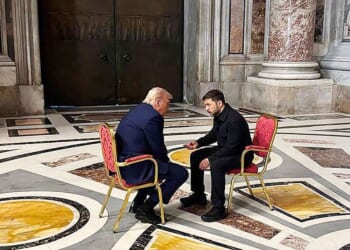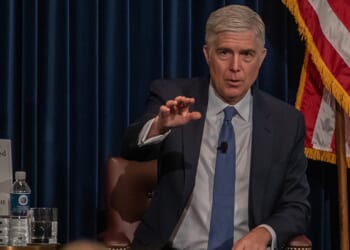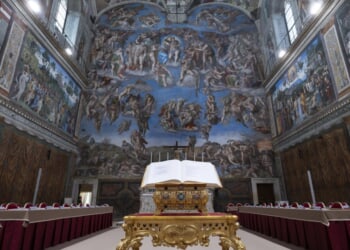Syria cannot hope to rebuild itself if it fails in preventing sectarian tensions from erupting into wide-scale violence.
In late April, rumors spread in Syria about an audio recording allegedly insulting the Muslim Prophet Muhammed. Within days, extremists were attacking members of the Druze minority on a university campus and also targeting Druze neighborhoods and towns near Damascus. The clashes continued into early this month. This is the second serious round of sectarian clashes in Syria since the new government of Ahmed al-Shara’a came to power after the toppling of the Assad regime on December 8, 2024.
The first clashes of this type targeted members of the Alawite minority in the coastal region of Latakia in Syria. Those clashes took place in early March after reports emerged that former pro-regime militants had attacked members of the new security forces. Thirsting for revenge, numerous armed men converged on towns in Latakia and targeted Alawites. Alawites filled many of the senior leadership positions in the Assad regime. Consequently, many Syrians associate the whole community with the hated former dictator.
The attacks on the Druze, therefore, fit a familiar pattern. An ethnic or religious minority is singled out and accused of wrongdoing. Vigilantes mobilize across the country and seek to take the law into their own hands. The Syrian government, which has had trouble unifying a plethora of armed groups that came to power in December 2024, is struggling to respond. The response is always days late. By this time, the damage is done, and anger has welled up on all sides.
The Syrian government now faces a major test. It has support from Western countries and countries that opposed the Assad regime. It has a lot of goodwill because people have sympathy for Syrians who suffered fourteen years of brutal civil war. However, with each clash and each attack on minorities, the goodwill and capital the new government in Damascus has built up is slipping away. This could cause a crisis between Damascus and the Kurdish-led Syrian Democratic Forces, who have sought to integrate their forces with the government in the coming year. The United States backs the SDF. And while they have been flexible in dealing with the new government, they don’t want to see minorities persecuted in eastern Syria.
There are other challenges facing Damascus. Israel has vowed to protect the Druze. After the attacks on that community, Israel carried out several rounds of airstrikes in and around Damascus at the beginning of the month. These airstrikes can weaken the new Syrian government. The Syrian government knows it can’t oppose Israel, and this puts it between a rock and a hard place. If Damascus gives in and fails to enforce law and order in areas like Latakia or Suwayda, then the government will find itself without the legitimacy to continue rebuilding Syria.
For instance, Syria needs to secure Afrin in northwest Syria and take control of Turkish-backed areas in northern Syria. If each region thinks it can be autonomous, Syria is not likely to emerge as a stable and prosperous polity.
On May 5, the U.S. Embassy in Damascus called on Syria to hold perpetrators of recent violence accountable. Acting U.S. Ambassador to the United Nations Dorothy Shea also said that “the Syrian people deserve leadership that is transparent, accountable, and fully committed to a more peaceful and prosperous future after 54 years of ruinous rule under the Assad regime. The United States continues to closely monitor the actions of the Syrian interim authorities…”
Syria is on notice. It can learn from the clashes in March and May and put in place a law enforcement model to pre-empt clashes in the future. For instance, the mechanism could involve a quick reaction force designed to create protective zones, checkpoints, and a buffer around areas where communal tensions erupt. Authorities could also take steps to monitor social media to identify, prepare for, and pre-empt clashes in the future.
The wider problem in Syria is that there are too many well-armed and independent militias. Most of these groups were involved in the civil war. Some of them are backed by Turkey and the Ankara-supported Syrian National Army. Others are linked to Hayat Tahrir al-Sham, the group Shara’a led before he became the transitional president. Then there are groups such as the Druze forces in Suwadya and also remnants of the Eighth Brigade in southern Syria, a former rebel group that reconciled with the Assad regime and then backed the new government. It was disbanded in April but likely has numerous adherents in Dara’a province in the south of the country.
Syria has sought to collect some small arms, but the government has found this is a challenge. There are also numerous incidents of smuggling in Syria. Some of the arms being smuggled include Iranian-made rockets likely destined for Hezbollah. Fourteen years of civil war means the country is awash in weapons. The imperative for reining in militias and armed groups, as well as extremists who seek to exploit sectarian tensions, is clear. The road ahead is not easy. However, the clashes in March and May show that Damascus needs a new mechanism to address emerging crises that can derail Syria’s critical state-building project.
About the Author: Seth Frantzman
Seth Frantzman is the author of Drone Wars: Pioneers, Killing Machine, Artificial Intelligence and the Battle for the Future (Bombardier 2021) and an adjunct fellow at The Foundation for Defense of Democracies. He tweets at @sfrantzman.
Image: Giannis Papanikos / Shutterstock.com.















